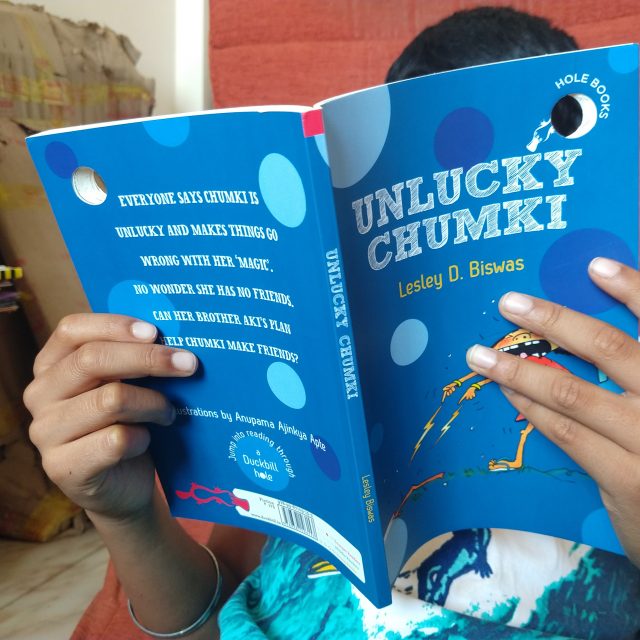Lesley Biswas’ story pulls the reader into the universe of its characters. It will take your child on a happy ride. _____________________________________________________________________________
Have you been a little child who was teased and taunted by others? Have you had to bear the burden and the deep anguish that comes from being labelled ugly, gawky, awkward, idiot and other such adjectives? Thankfully, I haven’t. But, I have known children in my circle who were branded all this and more. One or two of these children were my close friends too. I have seen the pain caused to them by these insults. Aside from the very meanness of the abuse, what hurt even more was the fact that it was often unfounded. Nobody knew why a child was being called this or that, but everybody would just join in the chorus just for the fun of it (not surprising, because children unthinkingly make up the meanest herds). As adults, such situations may not bother us much. But looking back, I can see anew how damaging it must have been for my little friends back then!
Something similar happens with little Chumki in Unlucky Chumki. Branded ‘unlucky’, ‘a girl with an evil tongue’ and ‘a sorceress’, the people of her village give her a wide berth. For poor Chumki, this means she has hardly any friends. To add to this, her Dadi (grandma) blames her for anything that goes wrong. Her mischievous brother Aki pours oil into the fire by spreading rumours about her.
Imagine her life! Crushed by sorrow, she is scared and diffident most of the time.
One day, Aki catches Chumki in an embarrassing situation. In return for his silence, he enlists her help in a prank he wants to play on the local baddie Kanti Kaka. Thus begins a rollicking adventure for the children. With the help of their friends, Aki and Chumki plan a few shocks for Kanti Kaka. Why do they want to confront him thus? What shocks do they spring on him? What happens ultimately? Is Chumki able to shrug off her dubious reputation and live a happy life? The rest of the story reveals answers to these questions. As the story races to its climax, you feel yourself pulled deeper and deeper into the plot.
Even as Unlucky Chumki unfolds as an easy read, it holds out several thought-provoking moments for its reader. We see the beauty of sibling love, the innocence of a little girl and the power of friendship, as much as we feel the corrosive effect of superstitions.
Unlucky Chumki touches a chord deep down. The pages flip themselves as you breeze through the story. Lesley’s narration breathes life into the characters and situations, and is complemented wonderfully by the sharp, evocative illustrations (fine work by Anupama Ajinkya Apte). The presence of a motley set of characters like Dadi, a naughty brother, a village baddie and lots of ripe, luscious mangoes greatly enlivens the tale. Lesley’s style brings a sense of immediacy to the story. For instance, when Aki and his friends are gambolling in the muddy stream, I find myself joining them. When Dadi lifts her stick, I can see myself wincing in anticipation of what’s to come. My heart lurches when Kanti Kaka bellowes at the children. And when Chumki’s face wilts in sorrow, I feel my heart wrench.
In sum, Unlucky Chumki is a delightful, sensorial read. It did not just make my son sit engrossed. It made me feel like a 10 year old again. And therein lies the true triumph of this book.
Buy it for your child. He/she will love you all the more for it.
_______________________________________________________________________________
